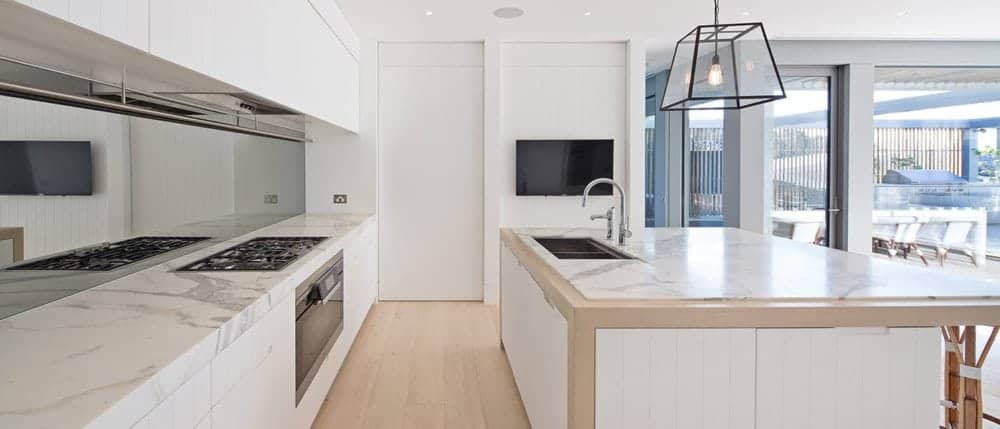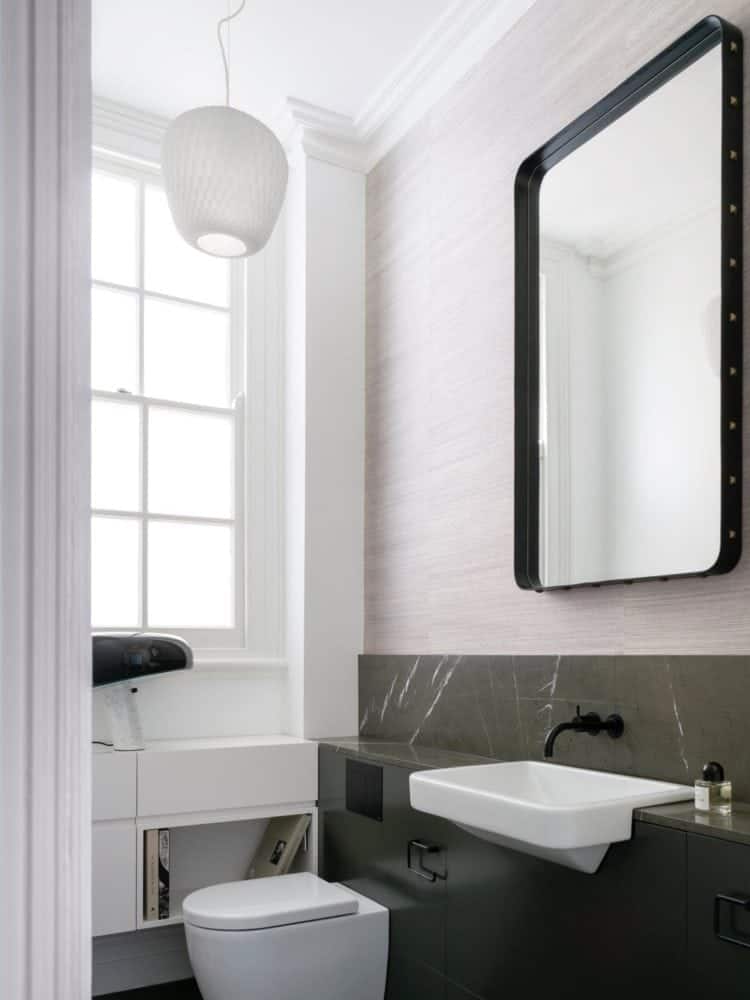Minimalist kitchens are extraordinarily popular in modern-style homes. From the inherent simplicity in the design to the ease with which you can create a luxurious feel, there’s a lot to love about minimalist homes.
While there are rooms in your home where it may be necessary to compromise a bit of function for fashion, your kitchen simply isn’t one of them. A minimalist kitchen design offers the perfect combination of stylishness and clutter-free, organised cleanliness that we all strive for in the hive of activity that is our kitchen.
So what construction material is best for a minimalist kitchen? There’s simply no question in our mind that natural stone tiles are the way to go.
Why natural stone?
Natural stone tiles offer both a beautiful and a durable solution for your home and especially for your kitchen. No other material is able to offer both attributes with such balance and finesse.
Natural stone, being quarried from the ground directly, offers a uniquely earthly feel whilst retaining a sophisticated elegance. Yet, if you’re a brass tax kind of person, rest assured that natural stone offers a pretty smart long-term investment.
The hardiness and durability makes natural stone perfect for kitchens in particular where it will be exposed to a lot of activity, not to mention liquid.
How to incorporate natural stone in your minimalist kitchen
Stone is versatile in both application and function which makes it uniquely suited to a variety of contexts. Some of the most common applications of natural stone tiles in a kitchen include:
Top natural stone tiles for minimalist kitchens
There are a LOT of varieties of natural stone to choose from. Even if you’re aiming for a minimalist kitchen sink to match your minimalist benchtop there are still tons of options to choose from. To help make your life easier, we’ve listed 7 of the top natural stone tiles to consider for your minimalist kitchen.
- Bianco Perlino Marble
Let’s start with a classic, minimalist stone. Bianco Perlino Marble is immensely popular thanks to its intricate, distinct veining and graceful, bright shading. If you’re aiming for a luminous kitchen full of bouncing light and a feeling of airy spaciousness, Bianco Perlino will perfectly compliment a minimalist design. This stunning marble stone is particularly good for use in flooring as its simplicity won’t overwhelm your minimalist aspirations. Yet if you want to use it in your kitchen benchtop or as a splashback, it works stylistically just as well.
- Calacatta Belgia Marble
From one marble stone to another… Calacatta Belgia is your classic marble-looking stone. Threaded with smokey veining amidst subtle yet powerful colours, this royal look will bring to life a minimalist kitchen without becoming overbearing. These natural stone tiles are particularly good if you’re worried that choosing white or silver stones will appear too plain but that going for a stone with a busy design or dark veining will lose the minimalist flavour. Calacatta Belgia is famous for its captivating beauty and its versatility in application. We particularly like it for flooring and kitchen countertops because it looks best in large slabs or big tiles.
- Mystic Black Granite
Let’s swing to the other side and leave behind the whites and greys for a moment. Just because you’ve gone down the minimalist route doesn’t mean that you have to stay with the lighter colours. Mystic Black granite brings a dark, bold visual element to a kitchen which, applied tastefully, can enhance the elegant simplicity of a kitchen. A granite kitchen countertop or benchtop–especially in the form of an island–will anchor your minimalist kitchen design with a spectacular statement that will drop jaws to the floor… a floor which would also look stunning in Mystic Black.
- Mocca Limestone
Designers and homeowners who are not such fans of minimalist design styles often use words like ‘cold’ and ‘impersonal’. We couldn’t disagree more! In fact, nothing proves such naysayers wrong as a Mocca limestone incorporating minimalist kitchen. With shades of swirling cream and ivory, Mocca has a warming look to it that manages to thread the needle of being both visually homely and luxurious. Cladding your kitchen with these natural stone tiles will create a genuine feeling of cosiness and comfort.
- Silver Travertine
Silver travertine stone tiles offer your minimalist kitchen a sense of depth and subtle complexity without ruining the overall effect of contemporary minimalism. This steel grey material echoes the cleanliness and ruthlessly smooth look of concrete whilst adding in nuanced silver, green and occasionally brown shading to give your kitchen a personal, homely touch. Our team particularly likes incorporating silver travertine in kitchen countertops where it can act as a central focal point with its eye-popping beauty without distracting from the overall kitchen design.
- Blue dreams marble
Now we turn to a coloured marble: Blue dreams marble. Blue dreams is a truly breathtaking stone: The vivid blue and creamy brown shadings evoke feelings of golden and sapphire ocean sunsets. If you want to inject a little bit of extra personality into your kitchen, we highly recommend considering blue dreams for a marble splashback or marble benchtop. The graceful design and calming colouring will hero the rest of the kitchen in a subtle, dignified manner.
- Royal White marble
For our last natural stone tile suggestion for your minimalist kitchen, we’ve gone all out; and by all out, we mean all white. Royal white marble is amongst the most majestic of natural stones and building materials found anywhere. Period. Effortlessly luxurious with its beautiful shimmering streaks of silver, royal white marble is the perfect choice for a kitchen that is meant to be as white as white can be. Incorporate this elegant marble in your floors, walls, benchtops or splashbacks. It makes for a fresh and stunning kitchen full of understated and impressive character.
Let’s design your minimalist kitchen together
Euro Marble are experts in all things stone. Our highly skilled team are extremely experienced in helping homeowners and builders find the right natural stone tiles to suit their desires, their homes and their budgets.
Nothing says pure minimalist kitchen design elegance more than natural stone and no one knows natural stone better than the team at Euro Marble. Contact us today and let’s see what we can do for you and your kitchen.








